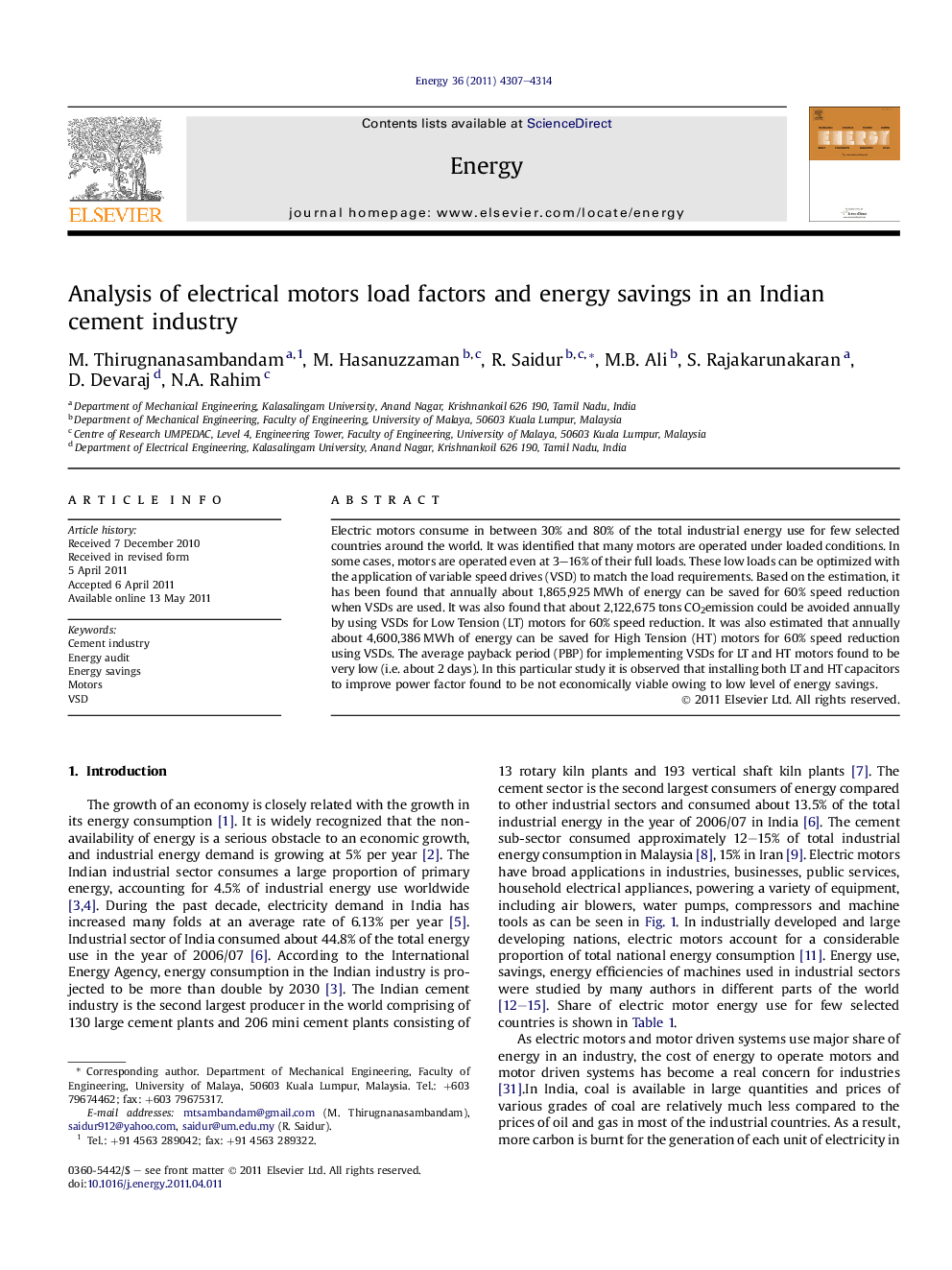| Article ID | Journal | Published Year | Pages | File Type |
|---|---|---|---|---|
| 1734192 | Energy | 2011 | 8 Pages |
Electric motors consume in between 30% and 80% of the total industrial energy use for few selected countries around the world. It was identified that many motors are operated under loaded conditions. In some cases, motors are operated even at 3–16% of their full loads. These low loads can be optimized with the application of variable speed drives (VSD) to match the load requirements. Based on the estimation, it has been found that annually about 1,865,925 MWh of energy can be saved for 60% speed reduction when VSDs are used. It was also found that about 2,122,675 tons CO2emission could be avoided annually by using VSDs for Low Tension (LT) motors for 60% speed reduction. It was also estimated that annually about 4,600,386 MWh of energy can be saved for High Tension (HT) motors for 60% speed reduction using VSDs. The average payback period (PBP) for implementing VSDs for LT and HT motors found to be very low (i.e. about 2 days). In this particular study it is observed that installing both LT and HT capacitors to improve power factor found to be not economically viable owing to low level of energy savings.
► Based on estimation, it has been found that 1,865,925 MWh of annual energy can be saved for 60% speed reduction when variable speed drives are used. ► It was also found that 2,122,675 tons of CO2 emission could be avoided annually by using VSDs for LT motors for 60% speed reduction. ► The average payback period for implementing VSDs for LT motors are found to be very low (i.e. about 2 days). ► It was also estimated that about 4,600,386 MWh energy and US$429,768,060 bills can be saved for High Tension (HT) motors for 60% speed reduction using VSDs.
